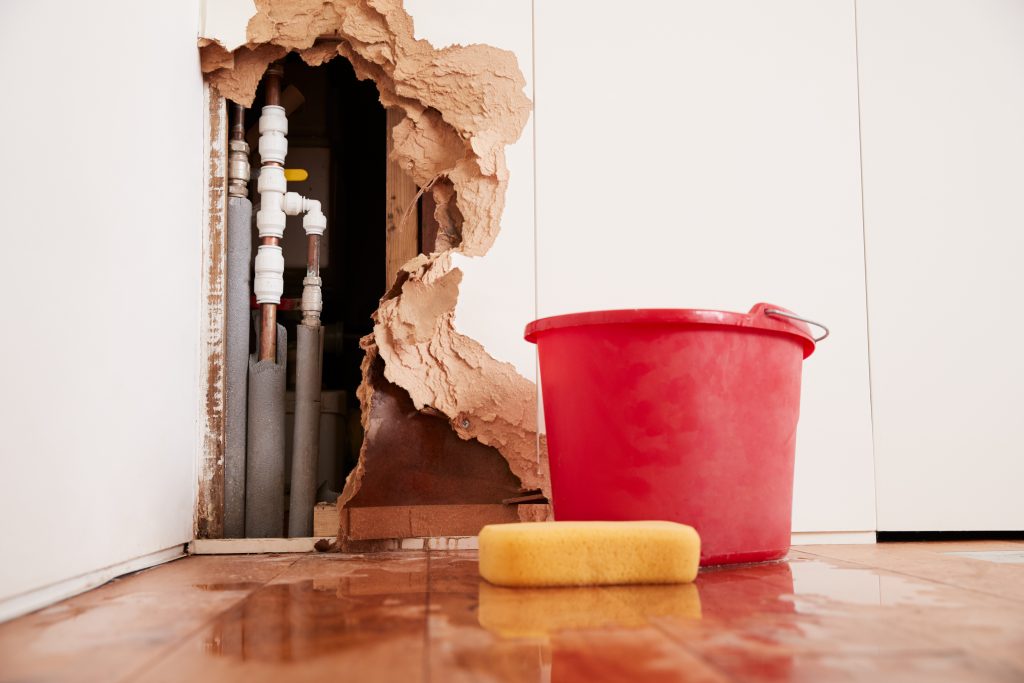How to Check If Your Home Has a Covert Leak
How to Check If Your Home Has a Covert Leak
Blog Article
Listed here in the next paragraph you might get a lot of high-quality insight about Finding hidden leaks.

Early discovery of dripping water lines can minimize a prospective calamity. Some little water leakages may not be visible.
1. Analyze the Water Meter
Every residence has a water meter. Examining it is a guaranteed way that helps you discover leaks. For beginners, switch off all the water sources. Ensure no person will certainly flush, utilize the tap, shower, run the washing machine or dishwasher. From there, most likely to the meter and also watch if it will certainly transform. Considering that no one is using it, there should be no motions. That shows a fast-moving leakage if it relocates. Also, if you identify no changes, wait an hour or 2 and check back once again. This implies you may have a slow leakage that could even be below ground.
2. Examine Water Usage
If you identify unexpected modifications, in spite of your intake being the very same, it means that you have leaks in your plumbing system. An unexpected spike in your costs shows a fast-moving leakage.
A stable boost every month, even with the very same behaviors, reveals you have a sluggish leak that's additionally slowly intensifying. Call a plumber to completely inspect your building, specifically if you really feel a warm area on your floor with piping underneath.
3. Do a Food Coloring Test
When it pertains to water intake, 30% comes from commodes. Examination to see if they are running correctly. Decrease specks of food color in the container and wait 10 minutes. There's a leak in between the tank as well as dish if the shade in some way infiltrates your dish throughout that time without flushing.
4. Asses Exterior Lines
Don't forget to inspect your outdoor water lines as well. Test faucets by connecting a yard hose. Should water seep out of the link, you have a loose rubber gasket. Replace this and also make sure all connections are tight. It will certainly assist obtain it expertly examined and also maintained each year if you have actually obtained a lawn sprinkler system. One tiny leakage can lose tons of water and increase your water costs.
5. Evaluate the circumstance and also inspect
House owners must make it a habit to check under the sink counters and also inside cupboards for any kind of bad odor or mold growth. These 2 warnings show a leak so punctual focus is needed. Doing regular inspections, also bi-annually, can save you from a significant issue.
Examine for discolorations as well as deteriorating as a lot of appliances and pipelines have a life expectations. If you believe dripping water lines in your plumbing system, do not wait for it to intensify.
Early discovery of dripping water lines can alleviate a potential calamity. Some little water leakages might not be visible. Inspecting it is a proven means that helps you discover leakages. One small leak can waste lots of water and increase your water expense.
If you presume dripping water lines in your plumbing system, don't wait for it to rise.
How to Know If Your Home Has a Hidden Leak
Water Meter Reveals Inexplicable Water Usage
If you’d like to test whether or not there’s a leak somewhere in your home, you can do this using your water meter. Here is how to conduct the test:
Don’t use any water in your home for at least 30 minutes; this also means not turning on faucets or water-using appliances.
Go outside, and check your water meter for activity.
If your water meter shows that there was activity, even though no one was using any water, this proves that there is a leak in your home.Visible Mold or Mildew Growth
Leaks behind walls create moist, dark environments that allow mold and mildew to grow and thrive. Eventually, you might see mold growth forming on the wall closest to a hidden leak.
If mold is growing in an area that receives a high amount of moisture, such as a bathroom, it may simply be an indication that better ventilation is needed. However, if you see mold growth on a wall or the ceiling in an area where you would not expect, you probably have a hidden leak.
Musty, Mildew Odor
Sometimes you might not be able to see the mold or mildew that is growing as a result of a leak. However, the smell can give the problem away just as easily. If you catch a whiff of something musty, there’s a good chance that old water is collecting somewhere in your home that you can’t see.
Stained/Warped Walls, Ceilings, or Floors
When your home soaks up water, a variety of red flags can become visible, including ceiling stains, bubbling drywall, warped walls, and sagging floors. While these issues can be caused by excess humidity, they can also be signs that a pipe or plumbing connection has started leaking behind your walls.
Inexplicably High Water Bill
After a while, you get a general sense for what your water bill should be. If you own a pool or sprinkler system, your bill will tend to be higher during summer. However, if you receive a water bill that seems especially high, and you can’t figure out what caused it, then you may have a hidden leak somewhere that’s increasing your bill.
https://www.plumbingjoint.com/blog/2019/july/how-to-know-if-your-home-has-a-hidden-leak/

Hopefully you liked our post about Detecting hidden plumbing leaks. Thanks for taking time to browse our short article. For those who enjoyed our article plz make sure you remember to share it. Thank-you for taking the time to read it.
Report this page